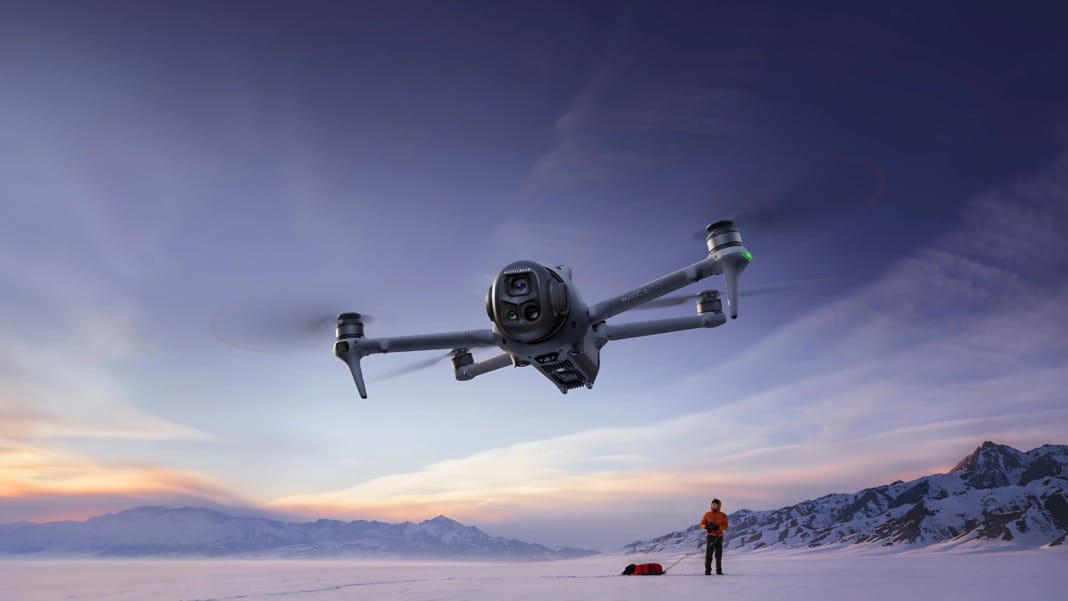At the launch event held at The Promontory @ Marina Bay, DJI gave the community its first look at the Mavic 4 Pro, a drone aimed squarely at professionals. With Singapore’s skyline as a backdrop, it was the perfect setting to test a drone built for cinematic aerial work. From the moment it took off, the Mavic 4 Pro showed clear signs of refinement over its predecessor, offering smoother manoeuvring, longer flight time and a vastly upgraded camera system.
The Mavic 4 Pro is a full-scale upgrade packed with headline features: a 100MP 4/3 CMOS Hasselblad camera, a re-engineered gimbal with full 360-degree rotation, and omnidirectional obstacle sensing that works even in low light. Whether capturing panoramic skylines or tight subject tracking, it’s built for creators who demand more control and flexibility in real-world conditions.
While this review is based on a short demo session, there was enough hands-on time to get a good sense of what DJI has accomplished here. From the redesigned remote controller to the impressive aerial stability over the breezy Marina Bay waters, the Mavic 4 Pro delivers strong first impressions.
A camera system that covers every angle
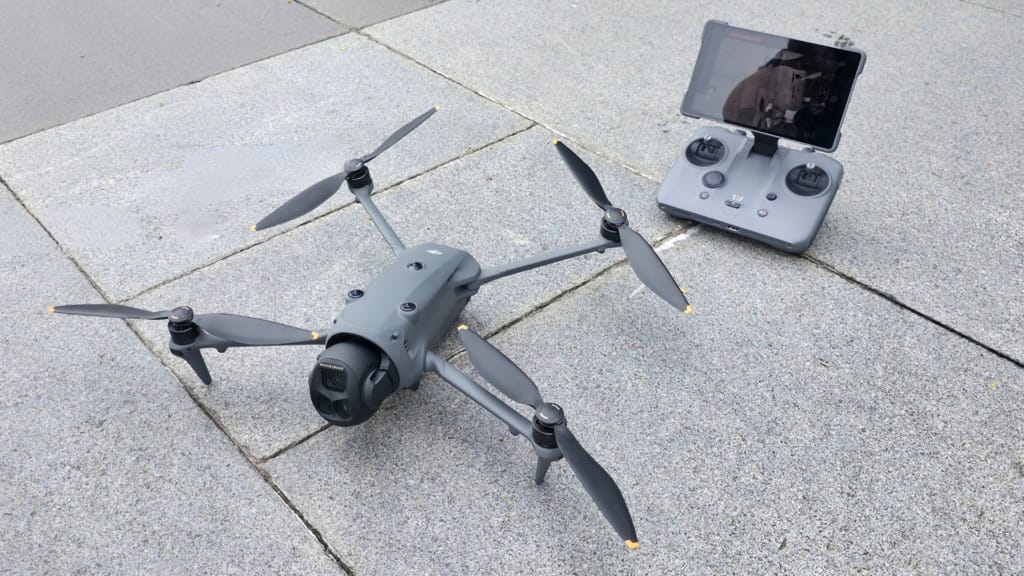
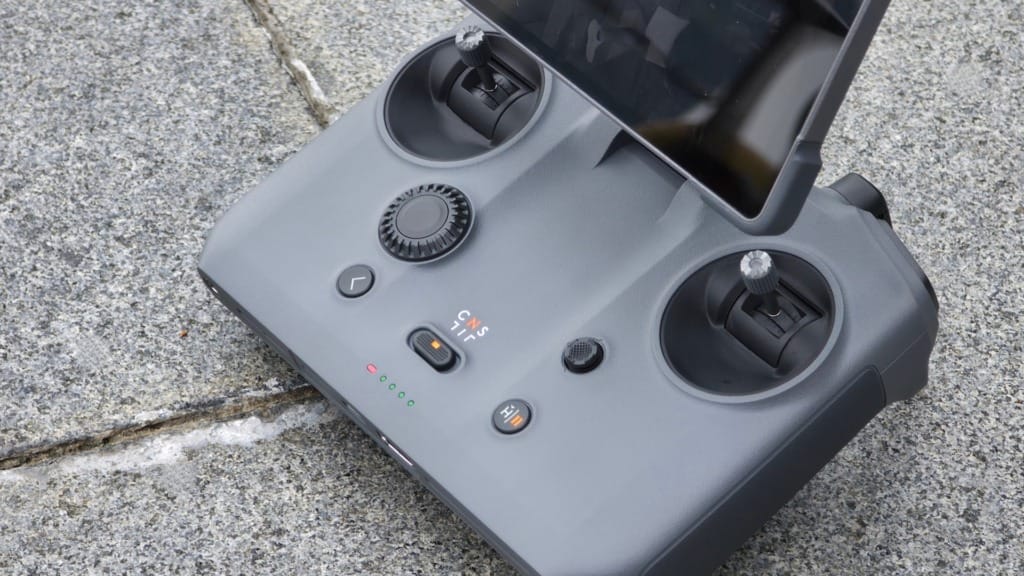
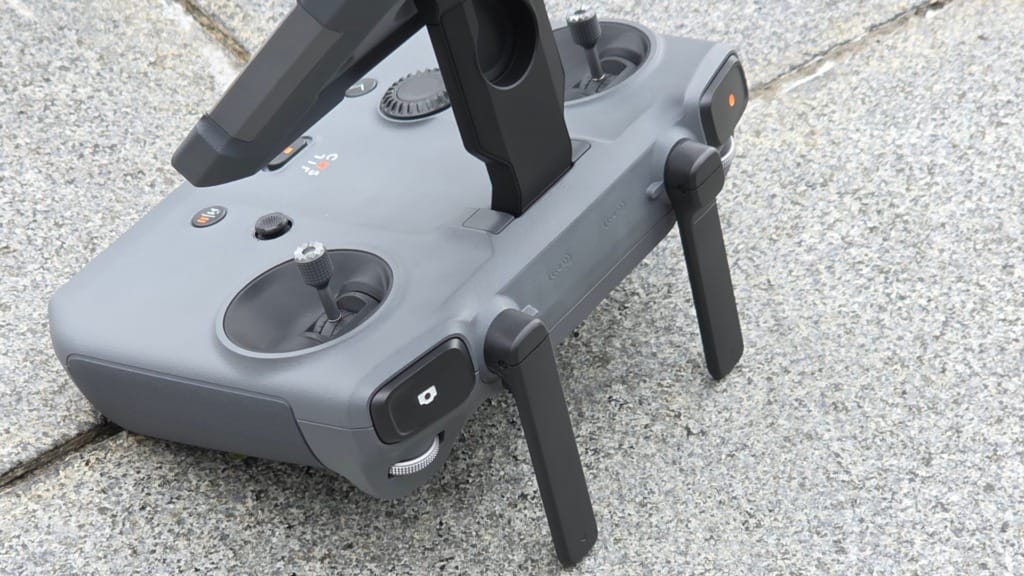
The Mavic 4 Pro introduces a triple-camera array with distinct roles. The 4/3 CMOS Hasselblad camera is standout, delivering 100MP stills and 6K video at 60fps. DJI has retained the variable aperture (f/2.0–f/11), which makes it ideal for controlling exposure in changing light. Even during the rainy morning launch event, when conditions shifted from bright sun to cloud cover, the Hasselblad lens adapted well, with punchy colours and no visible clipping in the highlights.
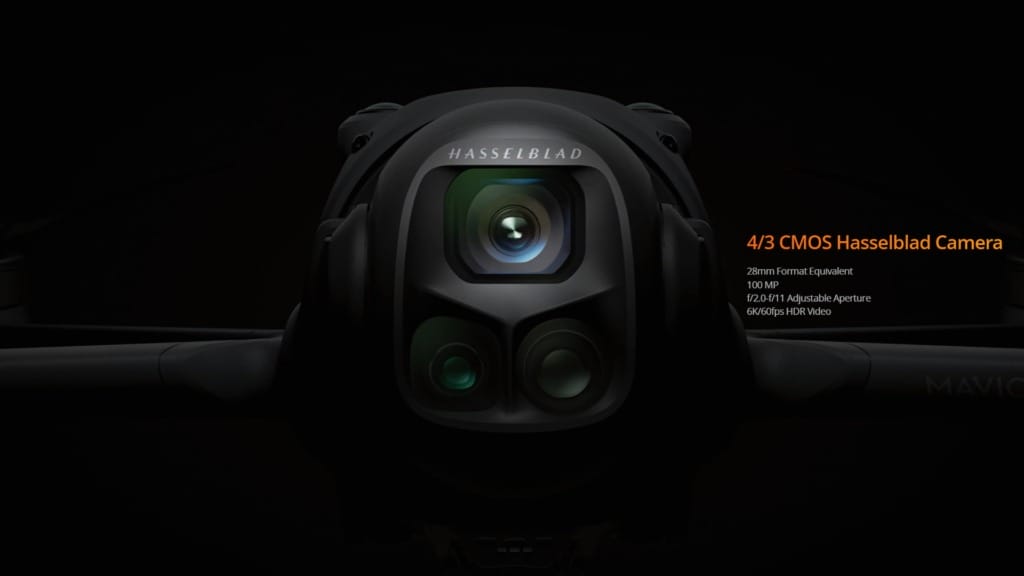
The mid-telephoto lens features a 1/1.3-inch sensor at 48MP and a 70mm equivalent focal length, which helps compress the frame and draw attention to buildings or moving subjects. Meanwhile, the longer telephoto (1/1.5-inch sensor, 50MP) offers a 168mm view.
All three lenses support 4K/60fps HDR video, and Dual Native ISO Fusion helps retain detail in shadowy corners of high-rise buildings and underpasses. During quick test captures, footage held detail across the tonal range, even when the subject moved across sunlit and shaded areas. It’s too early to assess full low-light performance, but this setup prioritises dynamic range and detail for serious shooting.
One of the more practical upgrades is the ability to switch between camera modules mid-flight with minimal delay. DJI’s interface makes toggling focal lengths smooth and responsive, allowing users to reframe quickly without interrupting flight or repositioning the drone.
Infinity Gimbal unlocks creative flexibility
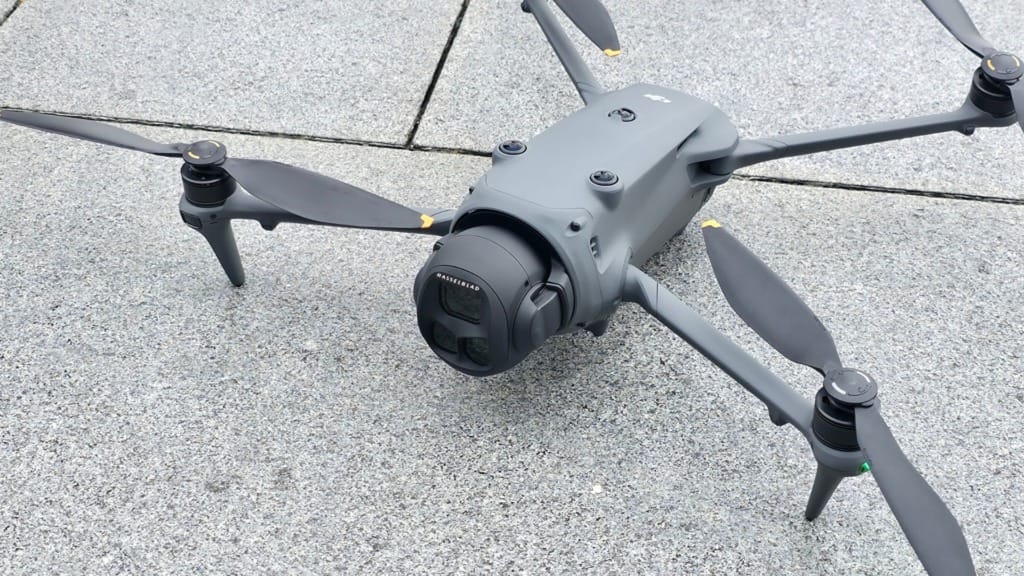
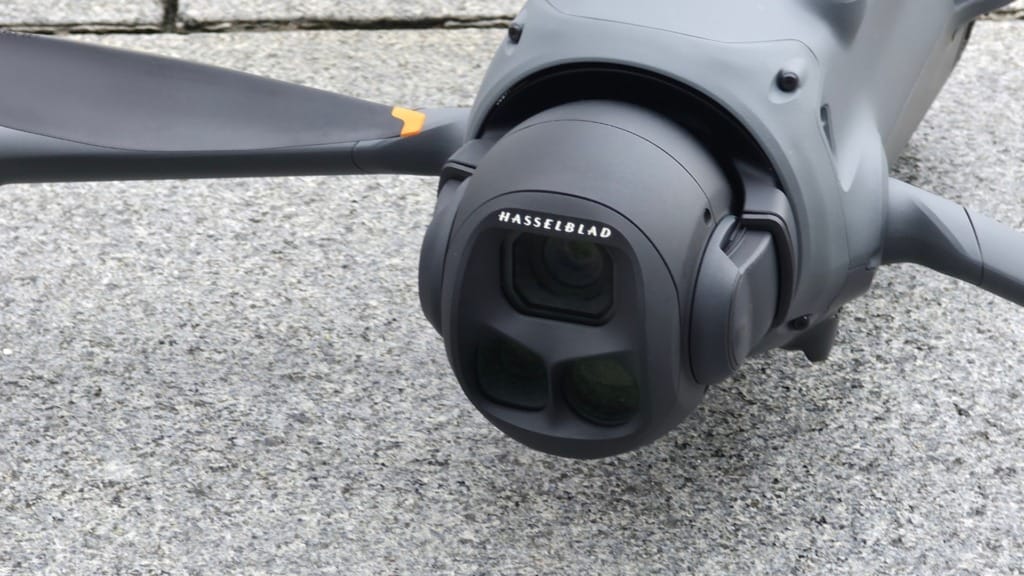
A key visual cue of the Mavic 4 Pro is its new “tennis ball” style gimbal, called the Infinity Gimbal. It allows 360° rotation and expanded tilt angles, including 70° upward shots.
The gimbal’s motion is smooth and stabilised, even when rolling or panning quickly. It also supports true vertical shooting without cropping, using physical rotation of the camera module instead of relying on software. This will appeal to teams producing for vertical-first platforms like TikTok or Instagram Reels, who want to maintain maximum image quality.
The gimbal held its horizontal positioning consistently, even in breezy conditions. With no visible jitter, DJI’s updated stabilisation algorithms kept the footage steady through quick pans and orbit-style moves. With no mechanical limits cutting off movement mid-shot, creators can plan more fluid and ambitious paths. The 360° capability also encourages more ambitious motion paths and more immersive storytelling.
DJI says this is the most durable gimbal system they’ve engineered for a foldable drone. Time will tell how it holds up under extended use, but the physical feel during calibration and flight was reassuringly solid.
Flight performance tested in Singapore’s urban wind
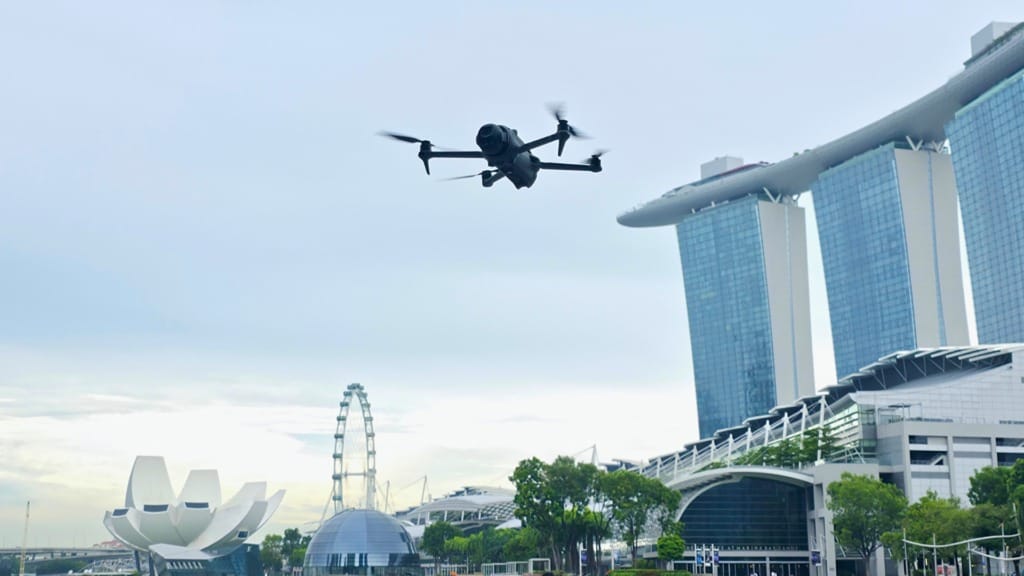
While the Promontory @ Marina Bay offered scenic views, it created a meaningful test environment. Wind conditions along the waterfront are rarely still, and the Mavic 4 Pro was clearly put through its paces. Despite the light breeze, the flight was stable, with a crisp response from the controller and no signs of drift or overshoot when coming to a stop.
Its 51-minute rated flight time wasn’t tested in full, but several back-to-back flights ran for around 35 minutes each with a buffer remaining—impressive, given frequent stops, gimbal rotations and lens changes. The 1063g frame and upgraded propulsion system appear to give it both endurance and power, with flight speed maxing out at 25m/s in Sport mode.
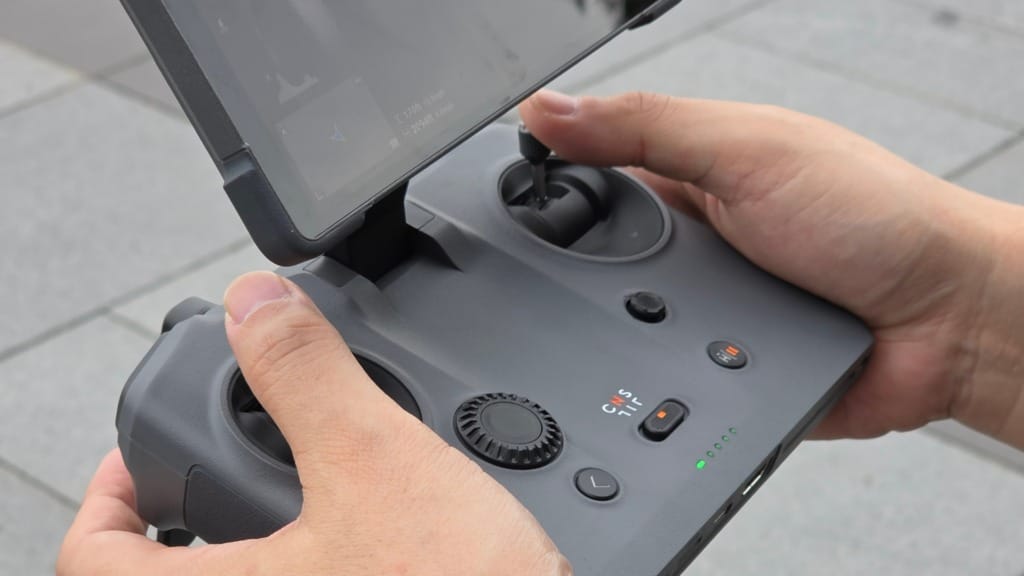
Obstacle avoidance in a city setting is critical, and the Mavic 4 Pro’s 0.1-lux Nightscape omnidirectional sensing worked well around the area’s lamp posts, railings, and visitor traffic. DJI’s LiDAR-based front sensors enabled precise stops when flying toward trees near the river walk, even under low-contrast lighting. This will be particularly useful for users flying in complex architectural or construction sites across Southeast Asia.
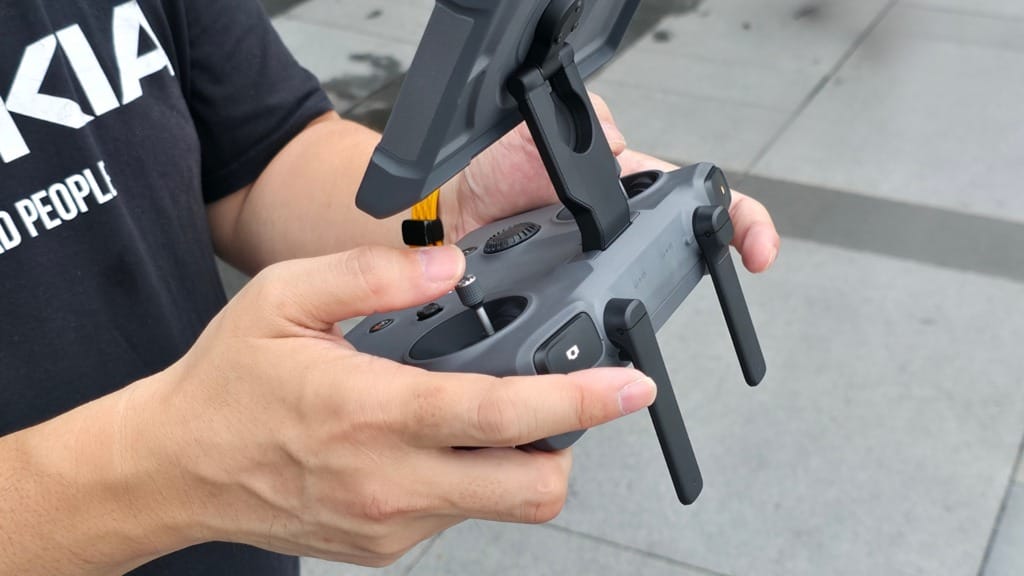
The O4+ transmission system also lived up to expectations. The video feed remained sharp and responsive throughout, with no dropouts, even when briefly flying behind structures or near metal objects. The 30km transmission range is less relevant in a tightly regulated environment like Singapore, but for overseas shoots or industrial use, this ensures robust long-distance control.
How it compares to previous DJI drones
While the Mavic 4 Pro is positioned as a flagship upgrade, it helps to see how it stacks up against its predecessors. Here’s a side-by-side comparison of the DJI Mavic 3 Pro and Air 3S, highlighting key differences in imaging, performance, and intelligence.
DJI Mavic 4 Pro vs Mavic 3 Pro vs Air 3S
| Specification | DJI Mavic 4 Pro | DJI Mavic 3 Pro | DJI Air 3S |
|---|---|---|---|
| Main Camera | 100MP 4/3 CMOS Hasselblad | 20MP 4/3 CMOS Hasselblad | 50MP 1-inch CMOS Wide |
| Medium and Tele Cameras | 70mm (48MP 1/1.3″) & 168mm (50MP 1/1.5″) | 70mm (48MP 1/1.3″) & 166mm (12MP 1/2″) | 70mm (48MP 1/1.3″) |
| Video Resolution (Main) | Up to 6K/60fps HDR | Up to 5.1K/50fps | Up to 4K/60fps HDR |
| Video Resolution (Telephoto) | Up to 4K/60fps or 4K/100fps | Up to 4K/60fps | Up to 4K/60fps |
| Gimbal Movement | Infinity Gimbal: 360° rotation, ±90° tilt, 70° upward | Standard 3-axis, 35° upward tilt | Standard 3-axis, 60° upward tilt (cropped vertical) |
| Flight Time | Up to 51 mins | Up to 43 mins | Up to 45 mins |
| Transmission | DJI O4+, up to 30km (FCC) | DJI O3+, up to 15km (FCC) | DJI O4, up to 20km (FCC) |
| Obstacle Sensing | Nightscape Omnidirectional + LiDAR (0.1 lux) | Omnidirectional sensing | Nightscape Omnidirectional + LiDAR |
| Storage | 64GB (Standard), 512GB (Creator) | 8GB (Standard), 1TB (Ciné) | No onboard storage |
| Weight | 1063g | 958g | 724g |
The verdict: DJI Mavic 4 Pro
Based on this hands-on session, the DJI Mavic 4 Pro looks set to become the new standard for aerial creators who value quality and control. Every key feature—camera resolution, gimbal range, battery life, transmission range—has received a meaningful upgrade over the Mavic 3 Pro.
In particular, the triple-camera setup, 360° gimbal and ActiveTrack 360° enhancements felt practical and performance-ready. From subject tracking in a crowded park to vertical panning over skyscrapers, the Mavic 4 Pro handled it all with confidence.
While it remains to be tested over longer flights and varied conditions, the first-look experience shows DJI has once again pushed the limits of what a compact professional drone can achieve. For filmmakers, content studios and marketing teams across Southeast Asia, the Mavic 4 Pro offers a strong blend of technical power and creative freedom.
